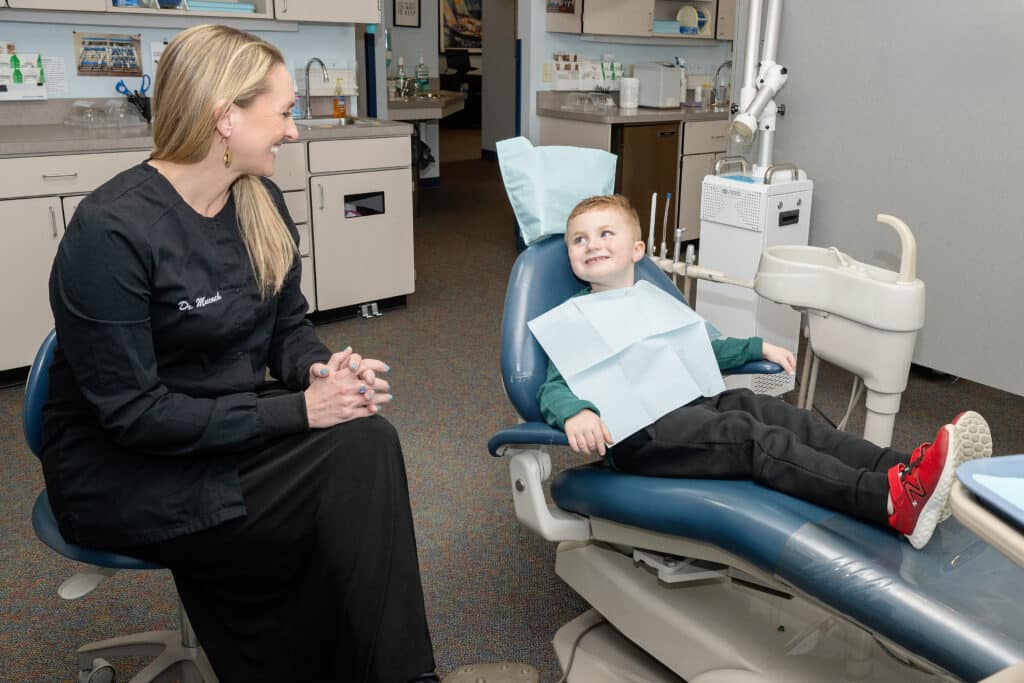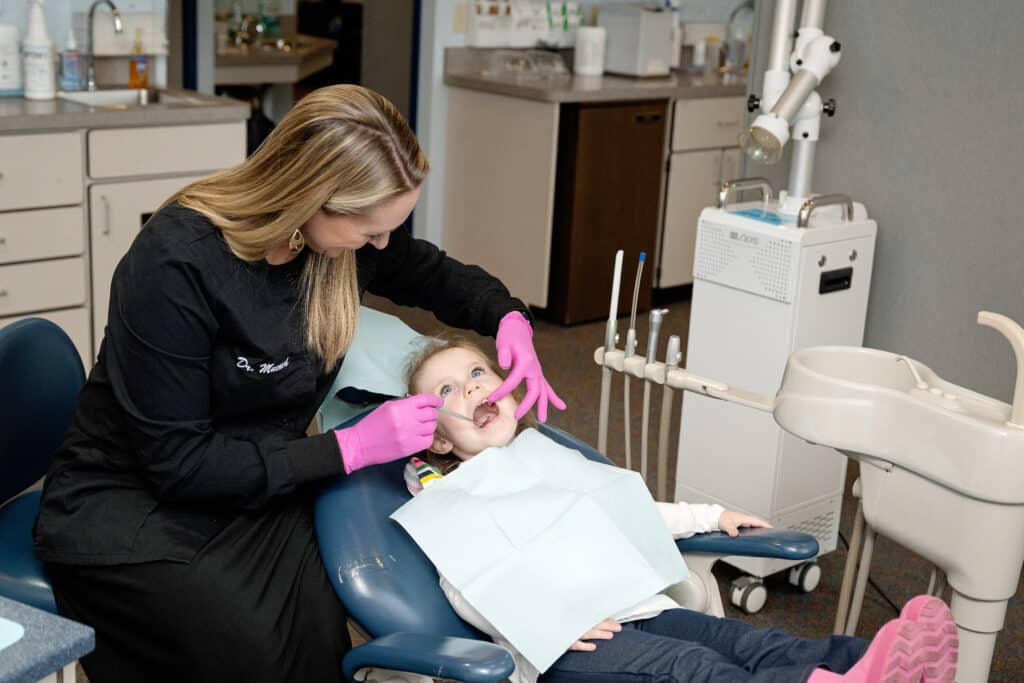
When Should My Child First Visit the Orthodontist?
Timing is everything when it comes to orthodontic care. While orthodontists can enhance smiles at any age, there is an optimal time to begin treatment.
The American Association of Orthodontists recommends that children have an initial orthodontic evaluation by age 7 or 8 or at the first sign of any orthodontic concerns. It’s important to understand that this evaluation does not necessarily mean that immediate treatment is needed. In fact, for most children, treatment may not be required for several years, but early evaluation offers key insights into potential issues and the best time to start treatment.
At our office, we emphasize that early detection through a thorough examination provides valuable information regarding your child’s needs. Dr. Anna Muench determines the ideal time to begin treatment, ensuring the best results for your child’s smile and oral health.
Why is Early Evaluation So Important?
Evaluating your child’s orthodontic needs around age 7 allows Dr. Muench to:
- Assess the growth of the jaw and teeth – By this age, the first permanent molars and incisors have emerged, providing a clear picture of how your child’s teeth and jaws are developing.
- Identify potential future issues – Early evaluation helps to detect any existing problems, such as crowding, bite misalignment, or jaw development concerns, allowing for more effective treatment down the road.
In most cases, early evaluation does not lead to immediate treatment. Instead, it gives us the opportunity to monitor your child’s growth carefully. If necessary, we can intervene at the perfect time to simplify future orthodontic care.
What Are the Benefits of Early Treatment?
While not every child requires early treatment, there are significant benefits when treatment is started at the right time. Early intervention can set the foundation for a healthier smile and simplify future orthodontic care.

Early intervention can:
- Guide the eruption of permanent teeth into favorable positions.
- Modify jaw growth to create a balanced, functional bite.
- Enhance appearance by addressing jaw or teeth misalignment early on.
- Prevent more serious issues such as overcrowded teeth or protruding front teeth.
- Preserve space for unerupted teeth by ensuring that the emerging permanent teeth have enough room.
By addressing these issues early, we can avoid more complex treatments later and ensure that your child’s oral health progresses in the most efficient way possible.
What Happens if Treatment is Not Needed Right Now?
If Dr. Muench determines that early treatment is not necessary, your child will be placed in our Orthodontic Supervisory Program. This program enables us to track your child’s development and monitor the eruption of permanent teeth. It’s important to note that some children may need treatment later, but regular monitoring helps ensure that the right intervention happens at the ideal time.
The Supervisory Program includes:
- Monitoring your child’s dental development with regular check-ups every 6 to 12 months.
- Identifying potential issues early so we can adjust the treatment plan as needed.
- Providing peace of mind by ensuring that your child’s orthodontic needs are being watched closely without incurring any extra cost.
The Importance of Early Orthodontic Treatment
Many people associate orthodontics simply with straightening teeth, but it’s about much more than just improving appearance. Orthodontic treatment also helps improve the function of the bite and jaw alignment, addressing issues such as:
- Malocclusions – Misalignments between the teeth or jaws that affect how the teeth fit together.
- Jaw shifting – Conditions like crossbites or underbites that can impact how the jaw functions and grows.
- Overcrowding – When teeth are too close together, it is hard to clean them properly, leading to possible decay or gum disease.
Treating these issues early on can help prevent them from worsening and lead to better oral health and long-term wellness.
Why Treat Malocclusions?
Malocclusions, or bite problems, should not be ignored, as they can lead to a variety of complications, including:
- Crowded teeth are harder to clean and may contribute to tooth decay and gum disease.
- Protruding teeth are at a higher risk of accidental injury or fracture.
- Crossbites can cause jaw misalignment, uneven wear of teeth, and even affect speech.
- Open bites may result in functional problems with biting and chewing, and speech difficulties.
By addressing these issues early, orthodontic treatment can help prevent more serious problems from developing and improve both the aesthetics and function of your child’s teeth and smile.
Does Early Treatment Mean No Braces Later?
While early treatment can correct significant issues and prevent future complications, it doesn’t always eliminate the need for braces later. Since not all permanent teeth have erupted during early treatment, final alignment often happens later during a second phase (Phase II – full braces) in the teen years. However, further treatment may not be needed in some cases.
Should We Continue Seeing Our Family Dentist During Treatment?
Yes! Maintaining regular dental check-ups is essential for children undergoing orthodontic treatment. Braces or other appliances require extra care to keep teeth and gums clean, so we recommend seeing your family dentist for routine exams and cleanings every 6 months. This ensures that your child’s oral health stays in top shape throughout their orthodontic journey.

